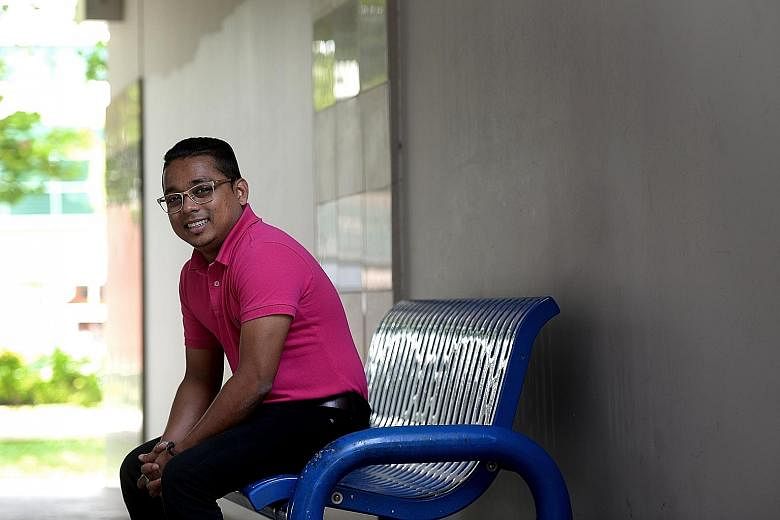When Mr Shaik Nifael Shaik Nazeemuddin found out in 2003 that his secondary school posting was to Nan Chiau High School, one of Singapore's oldest Chinese schools, he cried.
It was not so much that it was his fourth choice, but more because its name rhymes with a certain Hokkien word.
"My older cousins were bothering me about it, and I couldn't take it as a 12-year-old," said Mr Shaik, who is now 27 and co-owns a waste management business.
Mr Shaik - who has Indian, Malay and Peranakan roots - wanted to get a transfer out of the school, but his businessman father told him to give it a try before making a decision.
Mr Shaik said: "He said I would get better development with the Chinese community, and that I would be more open-minded about being in business.
"When my father first started his business, he got cheated here and there. He told me to study hard and also make connections with people in school."
When Mr Shaik first went to Nan Chiau, he had a culture shock at just how much Mandarin was used in school.
Though the school was designated a Special Assistance Plan (SAP) school only nine years later, in 2012, it already had a strong Chinese culture before that.
"The school song was in Mandarin, we took the pledge in Mandarin... I felt very alienated when I found out," said Mr Shaik.
There were fewer than 10 non-Chinese students in his cohort, Mr Shaik said. Five were in his Malay-language mother tongue class, and there were another two who took Tamil classes at another school.
But he summed up his experience at Nan Chiau as an "an eye-opener".
"If you can't beat them, join them," said Mr Shaik.
He picked up Mandarin, took part in three co-curricular activities - including track and field, and debate - and got used to the unfamiliar environment.
"Of course, there were some upper secondary kids who would pick on the non-Chinese kids. I was a short boy, and an easy target... but I learnt how to mingle and not be around non-Chinese kids all the time."
Looking back, he said he has no regrets about being in a predominantly Chinese school.
In fact, his three business partners are friends he made at Nan Chiau. "When I found friends, I managed to find real friends," said Mr Shaik.
He also benefited from the school's traditionally strict discipline. He said: "I was a very naughty student... but I was taught how to tell right from wrong."
Could the school have done more to attract minority students, before it became a SAP school that admitted only Express students who take Chinese or Higher Chinese as a mother tongue language?
"The school was open to students of all races, but it is the students' choice at the end of the day. They did not want to choose the school because they probably thought that it would be filled with only Chinese students."
But Mr Shaik said the parents of students who feel this way should encourage their children to try something different.
"They shouldn't be too worried about what may happen, and let them find their own way."
Yuen Sin


